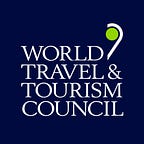Tearing Down Walls
By Tiffany Misrahi, Community Lead, Head of Aviation, Travel & Tourism Industry, World Economic Forum
The Travel & Tourism industry has grown dramatically in the past decades, reaching nearly 1.2 billion international arrivals in 2016, compared to 25 million in the 1950s. That’s a growth of 4,700% — and this number is only expected to get bigger, reaching 1.8 billion international arrivals by 2030. Travel & Tourism is effectively one of the fastest growing economic sectors in the world.
In a comedy show, I heard Trevor Noah saying that “travelling is the antidote to ignorance” and he is right. Travel enables people to discover unknown places, new people and different cultures, in turn dismantle existing stereotypes and biases we have. The industry effectively promotes peace and tolerance.
While the industry works to build bridges to connect people, the current geopolitical landscape, seems to be going in the opposite direction. In effect, we are witnessing a rise in isolationist and nativist rhetoric. But putting up walls and introducing travel bans will not make our countries safer, rather illegitimate travellers will become more creative while legitimate travellers will suffer.
What we need is a global joint approach based on collaboration to ensure the safety of national borders and their citizens. This approach will need to consider who will be the traveller of the future. In effect, by 2030, the UNWTO forecasts that the majority of the growth in international travel will come from Africa, the Middle East and Asia Pacific.
The World Economic Forum’s recently launched report entitled Digital Borders, put forward a vision for the future of travel, where your eligibility to travel is based on you rather than your country of origin. In short, the cover of your passport shouldn’t be the primary factor in defining whether you can travel. We envision a world in which travel will be safer for millions of people as intelligence and security organizations will be empowered with better tools, intelligence and data to perform their vital work more efficiently and effectively.
Digital integration is key to achieving this vision, as we move the global system from one of physical to digital borders. From digital identification and biometric authentication to seamless airport transfers, “digital” needs to be at the core of every journey made.
But what can we concretely do to turn this vision into reality?
1. Improve intelligence and data sharing. While significant efforts have been undertaken to improve timely information sharing, there are opportunities to further secure, routine intelligence and data sharing between national governments and international security organizations on travellers.
2. Provide advance passenger information. Strengthening the cross-border movement of people is dependent on the industry but more importantly on sovereign nations providing a common secure aviation environment. To achieve this, we need to drive forward the UN Security Council Resolution 2309 (2016) which urges nations to require airlines to provide advance passenger information to the appropriate national authorities.
3. Make the traveller part of the solution. It’s time for governments to reconsider the role of the traveller. People on the move should be able to own their digital biometric profile and have the ability to push this secure data in advance to make their journey easier.
4. Utilize enhanced harmonized biometric standards. We need to speak the same “language”- i.e. use and share harmonized standards to verify the identity and the eligibility of travellers. To take this forward, national governments need to implement the international standards established by ICAO and support emerging economies in implementing those standards.
5. Expand multilateral agreements. Based on the success of bilateral agreements, and on the current state of international security, governments should aim to expand established agreements multilaterally, while incorporating the harmonized requirements for traveller data.
6. Aim for a single application and a single fee. Many nations currently collect country-specific applications, with varying information requirements and separate application fees for travel security programmes. For multi-national implementation, there should be a single application to electronic travel systems with harmonized security requirements and a single cost-based fee with appropriate revenue sharing between participating governments.
7. Move to a digital process. Over time, the entire process of border management used by most travellers should be a wholly automated, electronic platform, built on verified biometric data. Evidence is clear that e-visas do not undermine security; they facilitate border crossings for many travellers, reduce paperwork and allow public safety officials to direct more attention and resources to threat identification.
